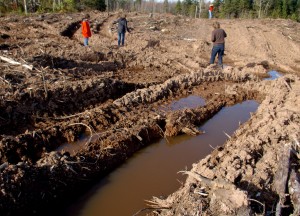Is forest biomass energy green?

As it turns out, burning Nova Scotia’s forests for electricity can put more carbon into the air than burning coal, at least for a few decades. Why? Burning trees to make electricity is inherently inefficient. Most of the energy in a tree is wasted “up the chimney” when burned for electricity. Plus, biomass harvesting can deplete carbon stored in forests. So far, most governments have been slow to respond to the overwhelming science on the down-sides of biomass energy. The State of Massachusetts, however, brought in minimum efficiency regulations to make sure that “dirty” biomass plants would not receive government subsidies. If Nova Scotia were to do the same, then Nova Scotia Power’s Port Hawkesbury biomass plant would be too dirty to qualify as renewable energy.
Of course, forest biomass electricity is not only questionable from a carbon emissions perspective. Removing the majority of biomass from a forest can devastate biodiversity, and reduce the productivity of forest soils.
Is there a good form of biomass energy? Yes. Burning wood that is cut from well-cared for woodlots to heat buildings can help to reduce carbon emissions, provided the wood is burned in highly efficient woodstoves or furnaces.
For more information, please read the Biomass Report from the East Coast Environmental Law Association, written by Jamie Simpson. Click here to download.
The following images are all of biomass harvests in Nova Scotia done by Northern Pulp Corp. (photos copyright Jamie Simpson)
